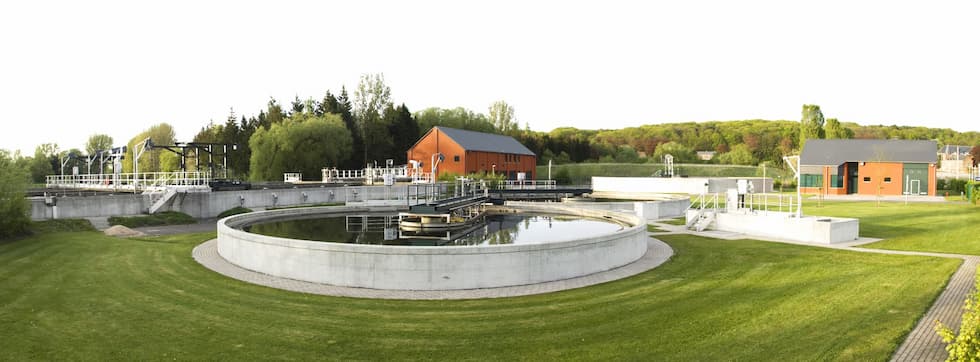
The second decade of the fourth industrial revolution is underway and with it comes a fascinating, fast-moving development within the manufacturing and industrial automation sectors.
This technological growth, commonly referred to as the internet of things (IoT), is a meeting of smart device technology and data generation, processing and accessibility. Within the consumer sector, this has resulted in the rapid creation of the smart home, where users benefit from the ability to remotely control a multitude of household appliances via computers, smartphones and tablets.
The trend’s growth is set to continue throughout the decade, with researchgate.net estimating that the current installed base of internet-connected devices (35 billion) will more than double to 75 billion by 2025.1
Outside of the consumer sector, a branch of IoT has emerged within industries including manufacturing, health care and water treatment. Known as Industry 4.0 or the industrial internet of things (IIoT), the integration of technology into physical devices can help managers make significant improvements to operational efficiency, energy consumption and environmental impact.
This technology is now changing what is possible in traditional pump applications, including liquid transfer and chemical injection in processes as varied as swimming pools, wastewater and cooling water treatment.
From flocculation and coagulation to pH correction and countless other water treatment applications, operators seeking to improve efficiency and sustainability are increasingly specifying web-enabled pump systems.
For example, the capacity for “live” document sharing creates the potential for equipment manufacturers to update digital installation guides and operating manuals to reflect changes in design or software and immediately upload the latest revisions to the cloud.
This allows unlimited changes to be made and means engineers and operators always have access to up-to-date literature. As well as accelerating installation, setup and commissioning, managers can reduce associated time and costs while helping to ensure a smoother user experience.
During equipment operation, IoT systems receive information from pump sensors, constantly harvesting data on multiple values—including cycle status, chemical consumption and vibration monitoring. With both historical and real-time data at their fingertips 24/7, users can make informed decisions relating to system performance and perform immediate adjustments to formulas, flow rate, unit of measure and other parameters as well as altering pump operating modes such as manual, batch and timed.
In addition to making instant efficiency improvements, operators are able to budget with accuracy and confidence while streamlining stored chemical volume.
Many web-connected pump systems have the capacity to convert chemical consumption volume into the equivalent financial value, which allows projected savings to be calculated when considering dosing adjustments. These figures may also be presented to senior management to justify changes or demonstrate performance in monetary terms.
Many pre-Industry 4.0 dosing pump systems incorporate some form of a fault-logging system, with a drawback that these are not always checked regularly, let alone actioned. This is often a consequence of the “if it isn’t broke, don’t fix it” philosophy where, apart from minimal maintenance, equipment may be left to run if there are no visible issues.
Now, IIoT-based systems enable users to receive smartphone notifications as soon as faults occur, meaning defects can be immediately identified and remedial action planned to take place outside normal operating hours when disruption can be minimized. This yields an improvement in the efficiency of equipment maintenance, repair and upgrade planning while avoiding costly and inconvenient unplanned downtime.
As well as overall system health, IIoT technology even allows the performance and status of specific pump components such as bearings, couplings and belts to be assessed. The operator can be alerted immediately should a part be due for replacement, facilitating maintenance while also driving aftermarket sales for suppliers. Meanwhile, this component and system data allows manufacturers to benefit from IIoT by monitoring trends, user preferences and common problems in order to refine equipment and improve their product offering.
It is not just the efficiency of equipment and utilities that can be improved. For businesses running across multiple sites in different countries or even continents, IIoT and the leveraging of real-time data means operations management can be anywhere in the world and still be as effective as they would be standing in front of the machine’s controller.
The ability for one operator to remotely manage pump systems across multiple sites may also be useful for addressing the wastewater sector’s well-reported lack of skilled technical personnel, caused by retirements in an aging workforce.2
This is especially true in water treatment systems within smaller communities, where lone, long-serving operators possess extensive system knowledge that may not be recorded or documented. In this situation, a sudden retirement, illness or period of extended leave has the potential to impair system operations.
Plus, wasted journeys by technicians—who may travel a considerable distance to assess a pump’s condition as part of routine maintenance only to find it in perfect working order—can be eliminated, as they need only be deployed when required.
This is particularly timely post-coronavirus when the remote-working trend established during the pandemic has seen many operators continue to work at least partially from home. The integration of IIoT has begun to be seen as an expectation rather than a bonus.
The influence of IIoT on the pump industry is almost overwhelmingly positive. However, connecting pump systems to the internet immediately makes them vulnerable to cyberattacks, where just one breach of security can have a potentially devastating impact on safety, cost and reputation.
It is vital that equipment manufacturers employ robust processes in the design of secure products and back them up with world-class training and ongoing support for users.
With a new decade beginning and 5G opening yet more possibilities for high-speed, ultra-reliable IoT, the pump industry is primed to see where technology will take Industry 4.0 in 2021 and beyond.
References
1 - www.researchgate.net/figure/IoT-Connected-devices-installed-base-worldwide_fig1_342262969

